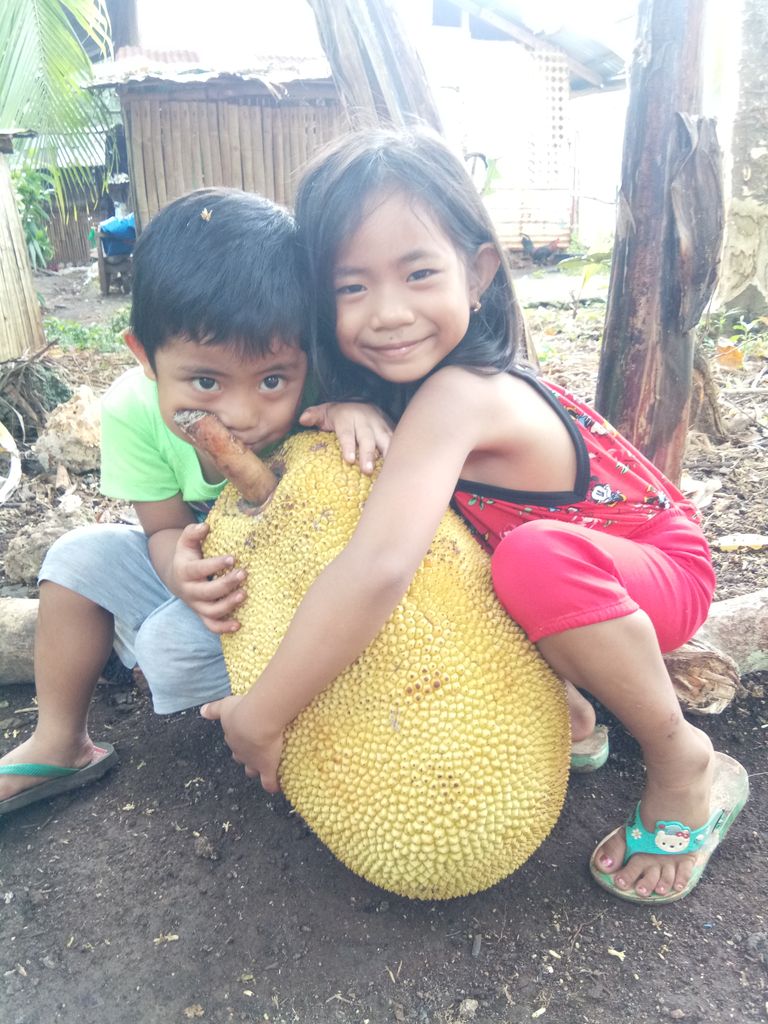Fruits from my Parents backyards!
Province Life was the best for living!

*JACKFRUIT!
•Jackfruit is a heavy fruit and contains a large proportion of inedible tissue in the form of unfertilized floral parts, the spiny outer skin and the large number of seeds.
•Jackfruit is considered as the largest edible fruit in the world and found to contain large quantities of nutrients, such as carbohydrates, proteins, vitamins, minerals, and phytochemicals. Both the fruits and the seeds of jackfruit have been consumed widely. Most importantly, several countries have developed food products namely jam, jellies, marmalades, and ice creams using jackfruit. In addition, several parts of jack tree such as, latex, leaves, and barks have been extensively used in traditional medicine as well. Studies by various research groups documented the anticarcinogenic, antimicrobial, antifungal, antiinflammatory, wound healing, and hypoglycemic effects along with digestive and immunological benefits of jackfruit. Therefore, this book chapter intends to disseminate the evidence on nutritional, digestive, and immunological benefits of jackfruit/seeds to promote its utilization for commercial scale food production.

*MANGO!
•Mango is also a good source of the minerals copper and folate, which are especially important nutrients during pregnancy, as they support healthy fetal growth and development.
•Mango is low in calories yet high in nutrients — particularly vitamin C, which aids immunity, iron absorption, and cell growth and repair.
•A 1-cup (165-gram) serving of mango contains fewer than 100 calories. Its low calorie density makes it a great choice if you’re looking to reduce your calorie intake while still feeling full and satisfied.
•As long as you eat fresh mango in moderate amounts, it will likely reduce your risk of developing diabetes. Keep in mind that fresh mango does not contain as much sugar per serving as dried mango does.

*AVOCADO!
•Avocados contain a wide range of nutrients and may have various health benefits. These include improving digestion, lowering the risk of depression, preventing bone loss, supporting heart health, protecting against cancer, and more.
•This nutrient is often overlooked but is essential for bone health. Taking in enough vitamin K can support bone health by increasing calcium absorption and reducing the urinary excretion of calcium.
•A person can incorporate avocados into their diet in a variety of ways. Soft avocados, for example, make delicious guacamole, while firmer avocados are great for slicing and adding to a salad or sandwich.
-To tell how ripe an avocado is, gently press the skin. If the skin is completely firm, the avocado needs to ripen further. If the skin gives way to pressure, the avocado is ready to eat.
-People can use avocados in many other forms, such as an oil for cooking or moisturizing the skin or hair.

*SABA BANANA!
•Saba banana is a triploid hybrid... banana cultivar originating from the Philippines. It is primarily a cooking banana, though it can also be eaten raw. It is one of the most important banana varieties in Philippine cuisine. It is also sometimes known as the "cardaba banana", though the latter name is more correctly applied to the cardava, a very similar cultivar also classified within the saba subgroup.
•Saba bananas grow best in well-drained, fertile soils with full sun exposure. They inherit most of the characteristics of Musa balbisiana, making them tolerant of dry soil and colder conditions of temperate climates. They require minimum rainfall and can survive long dry seasons as long as adequate irrigation is provided. However, their fruits may not ripen under such conditions. They also have good resistance against Sigatoka leaf spot diseases.
•Saba bananas are also cultivated as ornamental plants and shade trees for their large size and showy coloration.
*Have A Wonderful Friday To All Of Us!🤗😍
THANK YOU FOR ALWAYS SUPPORTING MY BLOGS!💖🥰